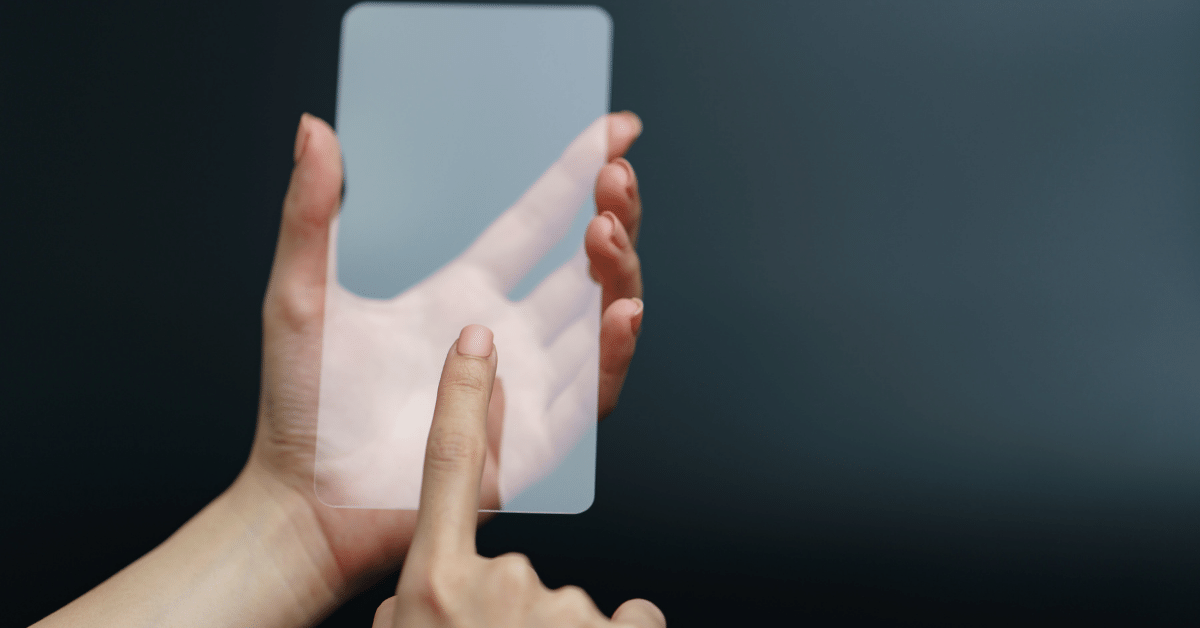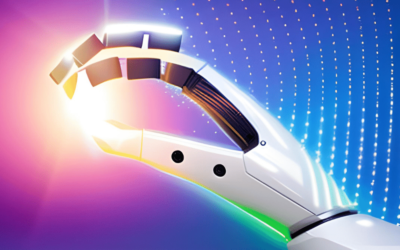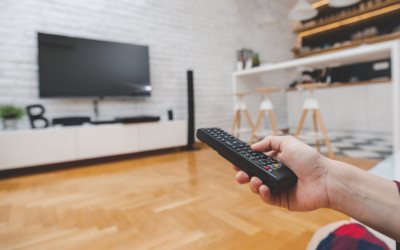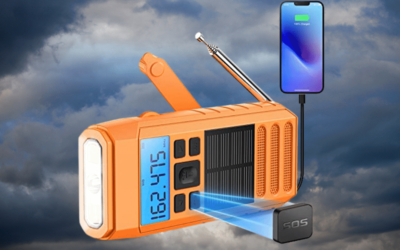Have you ever had a heart-stopping moment when you dropped your phone and the screen smashes? Avoid such a fate by equipping your device with one of the best screen protectors around! We’ll explore what kinds of screen protectors are available and how to choose the right one for your needs. Get yourself ready for an adventure in finding the perfect phone saver!
Top 10 Screen Protectors in 2024
Finding the right screen protector for your device can be difficult. There are a variety of materials, styles and protection levels that can be confusing and the selection often varies depending on which type of device you own.
As often, there is no one right answer to this question, but by understanding the different types, materials and levels of protection available, you can make an informed decision when selecting a screen protector. We’ll walk through the basics so that you can decide which type is best for you and your device. Knowledge is power when it comes to making the best choice for your valued gadget!
- WORKS FOR iPhone 14/iPhone 13/13 Pro 6.1 Inch Display Screen 0.33mm tempered glass screen protector. Featuring maximum protection from scratches, scrapes, and bumps.【Not fit for iPhone 14 Pro】
- WORKS FOR iPhone 16/15/15 Pro 6.1 Inch Display Screen 2024/2023 0.33mm tempered glass screen protector. Featuring maximum protection from scratches, scrapes, and bumps. [Not for iPhone 16 Pro 6.3 inch]
- WORKS FOR iPhone 11/iPhone XR (2019/2018 release) 6.1 Inch display ,0.33mm tempered glass screen protector. Featuring maximum protection from scratches, scrapes, and bumps.
- [Automatic Dust Removal Tech] Just cover and pull, the screen protector automatically aligns and takes away the dust. No more worrying about bubbles and dust.Watch our Installation Video to see how easy it is to use our Dust-Elimination Installation Screen Protector.
- The screen protector provides the maximum protection for the iPhone 11 and iPhone XR (6.1″) FLAT touchscreen. The space between iPhone 11, iPhone XR (6.1″) and the screen protector enables the proper space for the installation of most phone cases.”
- WORKS FOR iPhone 14/14 Pro 6.1 Inch Display Screen 2022 0.33mm tempered glass screen protector. Featuring maximum protection from scratches, scrapes, and bumps.
- WORKS FOR iPhone SE 2020 2nd/2022 3rd Generation iPhone 7/8/6s/6 (4.7 inch Screen only,NOT for Plus) . 0.25mm tempered glass screen protector. Featuring maximum protection from scratches, scrapes, and bumps.
- [Automatic Dust Removal Tech] Just cover and pull, the screen protector automatically aligns and takes away the dust. No more worrying about bubbles and dust. Please watch our Dust-Elimination Installation video tutorial before installing.
- WORKS FOR iPhone 16 Plus/15 Plus/15 Pro Max 6.7 Inch Display Screen 0.33mm tempered glass screen protector. Featuring maximum protection from scratches, scrapes, and bumps.[Not for iPhone 16 Pro Max 6.9 Inch]
- WORKS FOR iPhone 14 Plus/14 Pro Max 6.7 Inch Display Screen 0.33mm tempered glass screen protector. Featuring maximum protection from scratches, scrapes, and bumps.
Types of Screen Protectors
The market for screen protectors is full of choices that all offer different levels of protection, ranging from mild scratch-resistant coating to heavy-duty impact protection. Each type has its pros and cons when it comes to preventing scratches, drops, water damage, and other hazards that can affect the integrity of your device’s display. We’ll explore some of the most popular types of screen protectors and explain their differences in detail.
Tempered Glass: Tempered glass is one of the earliest forms of display protection and comes with a number of magnificent benefits. It offers superior strength compared to plastic sheet protectors while providing a crystal clear view into your device’s display. Most are rated for 9H surface hardness on the Mohs scale, meaning it won’t scratch easily under normal pressure from everyday handling. However, due to its brittle structure, tempered glass may shatter if too much force is applied directly onto it.
Anti-glare/Matte: These screen protectors provide excellent security against glare and unwanted reflections on your device’s screen caused by indoor or outdoor light sources such as fluorescent bulbs or sunlight. They are less visible than typical glass protectors due to their matte finish which helps cut down on unwanted fingerprint smudges as well as making it difficult for anyone else to see what you might be doing on your display in bright conditions.
Privacy: Privacy Screen Protectors can keep nosey onlookers at bay by limiting how much someone standing nearby can see when looking at your device through one side instead of two sides like with a glossy protector or no protector at all. Depending on the degree you choose for the level of privacy you require (increments like 30%, 45%, 60%, etc.), prying eyes will only be able to distinguish blurry shapes from a certain angle until they are directly facing the protected side you choose -the more protective setting usually means darker visuals but more privacy overall.
Benefits of Using Screen Protectors
Screen protectors are an essential device for any modern day device. These protective layers offer a variety of benefits that can help protect your screens from damage and enhance the longevity of your devices, while also delivering improved clarity and visibility.
The most obvious benefit of using a screen protector is that it can help protect against scratches and dents on the surface of your devices’ screens. Moreover, many screen protectors also act as an effective barrier against fingerprints and other substances, keeping your screens clearer for longer. Screen protectors can also help to reduce glare from overhead light sources, making screens easier to read in direct sunlight or other bright lighting conditions. Many newer models of screen protector even offer anti-glare technology which reduces reflected light, making them ideal for outdoor use.
In addition to their protective properties, screen protectors offer improved display clarity with some even featuring anti-glare features that reduce reflection from distracting light sources. A quality screen protector will also absorb shock from accidental bumps or drops, providing additional durability for your device’s display. Finally, using a quality screen protector will add to the resale value and increase the lifespan of your device by preventing damage that would otherwise require costly repairs or replacements in the future.
Factors to Consider When Choosing a Screen Protector
When choosing a screen protector for your device, there are several factors that you should consider before making a purchase. The first thing to consider is the type of protection your device needs. The three main types of screen protectors are film, tempered glass and liquid. Film protectors offer the least amount of protection and scratch resistance but are often more affordable; they also require periodic replacing over time. Tempered glass screen protectors provide greater protection against scratches and scuffs while providing some impact protection as well. They usually come with an oleophobic coating that prevents fingerprints and other smudges from accumulating on the surface. Liquid screen protectors are also highly resistant to scratches, provide good impact protection, and have even better oleophobic properties than their tempered glass counterparts.
It is also important to consider the size and shape of your device’s display when selecting a screen protector, as there may be different sizes available for wider or taller displays. Additionally, you should check if the installation process for the protector is easy or complicated; many brands now offer “bubble-free” models to make installation simpler with no air bubbles or gaps left between the protector and display. The cost of each type of protector should also be taken into account when making your purchase decision—while film protectors tend to be less expensive than temper glass or liquid types, they typically need to be replaced more often due to wear and tear over time. Finally, with most models providing equal glare reduction capabilities it’s important to choose one which does not affect visibility on bright days or in outdoor settings
How to Apply a Screen Protector
Screen protectors help protect the screen of your device against chips, scratches and fingerprints. But before you use one, you need to make sure it has been correctly applied.
To apply a screen protector:
1. Clean the device thoroughly using a microfibre cloth and rubbing alcohol or approved cleaning solution to ensure that there is no dirt or dust on the screen. Run your finger lightly over the screen to detect any debris before you begin.
2. Remove the protective film from both sides of the protector and use a microfibre cloth to clean any remaining residue from both surfaces.
3. Line up one edge of the protector with one corner of your device’s display, then gently place it on top – making sure not to press down too hard in order to avoid bubbles and creases forming beneath it.
4. If there are any bubbles or creases beneath the protector after you have applied it, use a microfibre cloth or squeegee (if supplied) to carefully remove them from the surface.
5. To finish installation, smooth out any remaining air bubbles with your fingers – starting in one corner and moving towards another until they disappear completely.
By following these steps, you can pay more attention to enjoying your device without worrying about damaging its precious display!
Tips for Maintaining a Screen Protector
When applied properly, screen protectors can help your device last longer and prevent scratches and other damage. There are several steps you can take to ensure the longevity of your screen protector and keep it looking like new.
First, avoid sharp edges or pointed objects from coming into contact with your device’s display. Also avoid any liquid from getting onto the surface of your device as this might damage the delicate layers of protection on the screen protector. When cleaning, use a microfiber cloth without any liquid or chemical cleaners—simply wipe gently over the surface of the phone or tablet.
If you need to use a cleaner for more tough spots, opt for a specialised screen cleaner designed specifically for touchscreens. Be aware that these cleaners can remove some of the protective coating on your device, so it’s important to read up beforehand and choose one that is compatible with a screen protector.
Finally, during installation, you should always avoid stretching out the material too much as it could damage some adhesive properties and weaken its hold over time which could lead to dust or dirt getting trapped underneath it. It is also important to periodically check that there aren’t any spaces where dust has built up over time as this could significantly reduce its effectiveness against scratches and wear and tear. Taking these simple steps will help keep your phone or tablet protected for many years!
Best Screen Protectors on the Market
When it comes to keeping your device safe and scratch-free, a screen protector is a must-have. With the growing variety of devices on the market, it can be hard to decide which one is right for you. Here are some of the best screen protectors available to help you make your decision:
Tempered Glass Screen Protectors: Tempered glass screen protectors provide superior protection thanks to their strength and thickness. They create a solid layer between your device and the environment but still allow touchscreen functionality. This type of protector is scratch-resistant and shatterproof, making them an ideal choice for those looking for heavy-duty protection.
Flexible Film Screen Protectors: Flexible film screen protectors are made from a thin, flexible material such as plastic or vinyl that provides good scratch resistance. They may not be as durable as other types of screen protectors but they are low cost and do offer some protection against minor scratches or cracks.
Liquid Screen Protector: Liquid screen protector works by forming an ultra thin protective layer over the surface of your device’s display. Liquid screens provide maximum defense against smudges, fingerprints, dust and dirt, and are incredibly easy to apply – all you need to do is spray it onto your device’s display!
Privacy Screen Protectors: Privacy screen protectors are specifically designed to keep unwanted eyes out of your personal information or activities on your device’s display. This type features a two-way filter that hides images on the display from being seen by people standing in front or behind you at any angle more than 30° off center so only you will have access to it.
No matter which type you choose, investing in a quality screen protector can help ensure that your device stays safe from scratches, dirt and other elements while also aiding in privacy protection!
Conclusion
When selecting a screen protector, it’s important to consider factors such as the type of device, level of protection needed and its intended use. Regardless of which type of screen protector you choose, it is essential to correctly follow the application instructions for optimal results. It’s also important to clean your new screen protector and device screen before installing the protectors.
When polyurethane or tempered glass screen protectors are used correctly, device screens can be well-protected from damage due to everyday use. Remember that no matter how careful you might be with your devices, acciDents do happen — so having extra protection is smart. Doing research, selecting the best product for your needs and properly applying your chosen screen protector can help ensure a lifetime of usage with minimal damage or issue.

![Ailun Glass Screen Protector for iPhone 14 / iPhone 13 / iPhone 13 Pro [6.1 Inch] Display 3 Pack Tempered Glass, Case Friendly](https://m.media-amazon.com/images/I/41YKFO7q5TL._SL160_.jpg)
![Ailun Glass Screen Protector for iPhone 16 / iPhone 15 / iPhone 15 Pro [6.1 Inch] Display 3 Pack Tempered Glass, Dynamic Island Compatible, Case Friendly [Not for iPhone 16 Pro 6.3 Inch]](https://m.media-amazon.com/images/I/41nZ7joe65L._SL160_.jpg)
![Ailun Glass Screen Protector Compatible for iPhone 11 / iPhone XR [6.1 Inch], 3 Pack Tempered Glass](https://m.media-amazon.com/images/I/41R16MX-aWL._SL160_.jpg)


![Ailun Glass Screen Protector for iPhone 14 / iPhone 14 Pro [6.1 Inch] Display 3 Pack Tempered Glass, Sensor Protection, Dynamic Island Compatible, Case Friendly](https://m.media-amazon.com/images/I/41jCDstPVaL._SL160_.jpg)




